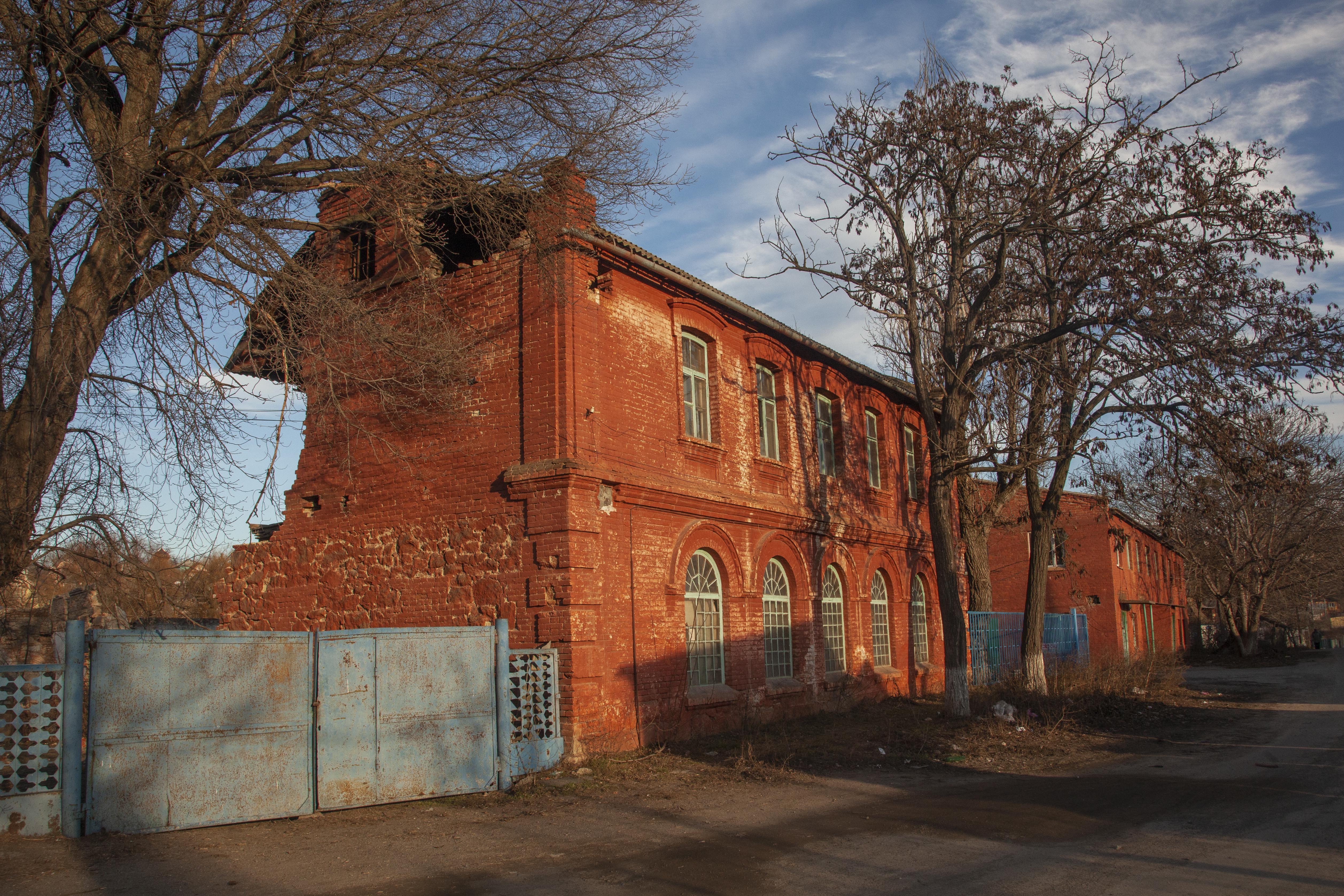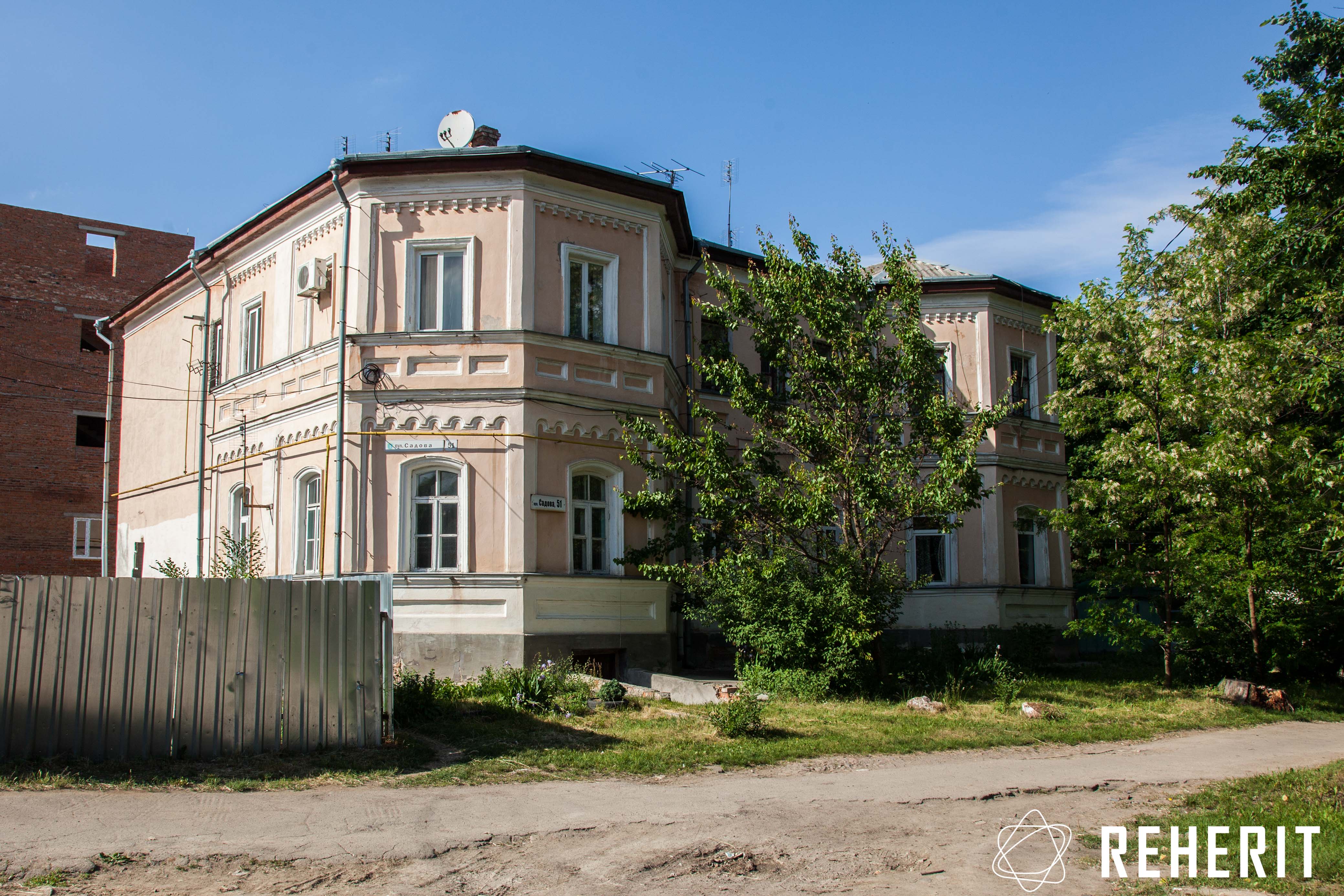English below ↓
У Російській імперії гімназії були привілейованими середніми навчальними закладами, які вирішували дві основні задачі: готували юнаків до вступу до університету та надавали базову освіту, яка дозволяла працювати чиновником. На Правобережжі, землях колишньої Речі Посполитої, з 1830-х років їх відкривали ще з однією конкретною метою: витіснити польські освітні традиції і поширити освіту – російську за мовою та вірнопідданську за змістом. У багатоетнічному регіоні гімназії мали стати інструментом асиміляції і виховання лояльних підданих імперії.
Російський уряд відкривав гімназії передусім у великих, губернських містах. У менших виникали прогімназії – навчальні заклади, що охоплювали 4 молодші гімназичні класи. Саме така прогімназія виникла в Умані у 1883 році. Спочатку вона працювала в іншому місці, спеціальний будинок для неї було зведено у 1896 – 1897 роках. Проєкт будинку приписують Владиславу Городецькому, творцю відомого київського “Будинку з химерами”. В Умані можна почути, що гімназію було зведено на місці, де раніше стояв графський палац Станіслава Щенсного Потоцького, і що стіни гімназії склали з цегли розібраного палацу. Дослідник Умані, краєзнавець Владислав Давидюк це спростовує і відзначає, що раніше тут стояли окремі господарські будівлі Потоцьких, згодом пристосовані під потреби військового відомства. Де насправді був палац Потоцького, сьогодні достеменно невідомо. Попри наукові спростування, красива легенда продовжує побутувати в Умані: її часто можна почути як від екскурсоводів, так і від місцевих мешканців. Вона додає будівлі гімназії особливого значення та шарму.
У 1896 році навчальний заклад став гімназією, тут вчилися 8 років. Особлива увага приділялася мовам: у гімназії вчили грецьку та латину, російську і церковнослов’янську, французьку та німецьку. При гімназії були спеціальна столярна майстерня, власний оркестр, метеорологічна станція, де учнів вчили стежити за погодою.
Гімназія в Умані була відкрита для всіх станів і конфесій, хоча тут, як скрізь на землях “межі осілості”, діяла дискримінаційна квота: євреї могли складати не більше 10% учнів. Тут спільно навчалися українці, росіяни, поляки, євреї Умані. Серед учнів та випускників гімназії були художник Лев Крамаренко, польський діяч харцерського руху (своєрідний аналог скаутів) Оскар Жавроцький, письменники і поети Микола Бажан та Юрій Смолич, археолог і засновник Уманського краєзнавчого музею Петро Курінний. У 1905 – 1910 роках у гімназії викладав історію і географію Данило Щербаківський – історик, етнограф і фахівець музейної справи, людина, яка згодом багато зробила для збереження музейного спадку України та розвитку вищої мистецької освіти. Щербаківський залучав своїх учнів, а також дівчат з Уманської жіночої гімназії, де він теж викладав, до етнографічних та археологічних досліджень.
У ХХ столітті рафінована гуманітарна підготовка поступилася виробничій прагматиці. Проте сюди і надалі віддавали своїх синів, сподіваючись для них кращих кар’єрних шансів. Про багатонаціональність Умані свідчить і той факт, що у 1920-х роках, під час політики “коренізації” (радянської політики заохочення розвитку місцевих національностей), в будинку колишньої гімназії діяла Уманська єврейська професійно-технічна школа. У 1930-х роках школу перетворили на технікум механізації та електрифікації сільського господарства (форсовано створювані колгоспи потребували технічних фахівців). Цікаво, що технікум довго наслідував гендерну спеціалізацію гімназії. До початку 90-х на його спеціальності йшли навчатися виключно хлопці.
У 1995 році технікум став агротехнічним коледжем, а у 2010 році він набув статусу структурного підрозділу Уманського національного університету садівництва. Радикальна перебудова ринку праці в Україні та нові запити від абітурієнтів вплинули на набір спеціальностей, які тут пропонують: сьогодні тут можна вчитися не тільки на техніка-механіка і техніка-електрика, але і на програміста, бухгалтера та операціоніста з фінансів та кредиту. До коледжу активно вступають і дівчата.
АВТОРКА ТЕКСТУ: Тетяна Портнова.
АРХІВНЕ ФОТО: Уманський краєзнавчий музей.
Чоловіча гімназія є одним з 10 об'єктів, ознакованих в Умані у ході реалізації проекту ReHerit. Об'єкти актуалізують теми, місця та імена спільної спадщини міста. Детальніше про маршрут та інші його об'єкти за посиланням.
Men’s Gymnasium
21, Nezalezhnosti St.
In the Russian Empire gymnasia were privileged secondary schools that satisfied two basic tasks: to prepare young men to enter university, and to provide basic education necessary to work as an official. Starting in the 1830s in Right-Bank Ukraine, the lands of the former Polish Commonwealth, these two goals were supplemented by a further one – to replace Polish educational traditions with a pro-Imperial loyalist education in the Russian language. In a multiethnic region, gymnasia were supposed to become an instrument of assimilation and educating loyal subjects of the empire.
The Russian government primarily opened gymnasia in large Governorate centers. Smaller towns had “progymnasia” – schools that offered the four junior years of a gymnasia. It was precisely this sort of “progymnasium” that was established in Uman in 1883. Initially it functioned in a different location, and a dedicated building for it was only erected in 1896-1897. The building’s project is ascribed to Wladyslaw Horodecki, creator of the famous Building with Chimaeras in Kyiv. Some in Uman state that the gymnasium was built on the former site of the Palace of Count Stanislaw Szczesny Potocki, and that the gymnasium’s walls were built of bricks taken from the dismantled palace. However, local historian and Uman scholar Vladyslav Davydiuk denies this, and says that the site had previously only held the Potockis’ technical buildings, later used for the needs of the military department. The precise location of the former Potocki palace is unknown today. In spite of this historically plausible debunking, the story survives in Uman, often retold both by tour guides and local residents. It adds particular significance and charm to the building of the Gymnasium.
In 1896 the school was finally turned into an eight-year gymnasium. The school had a particular focus on languages, teaching Greek and Latin, Russian and Church Slavonic, French, and German. The establishment also had its own woodwork shop, a band, and a meteorological station, where students were taught to track weather.
The Uman Gymnasium was open to all estates and denominations, although, like elsewhere in the Pale of Settlement, discriminatory quotas were in place: Jews could make up no more than 10 per cent of students. Ukrainians, Russians, Poles and Jews of Uman all studied here. Among the school’s students and graduates were artist Lev Kramarenko, Oskar Zawrocki, prominent figure in the Polish Harcerstwo (scouting) movement, as well as writers and poets Mykola Bazhan and Yurii Smolych, and archaeologist and founder of the Uman Local History Museum Petro Kurinnyi. In 1905–1910 history and geography here were taught by historian, ethnographer and museum professional Danylo Shcherbakivskyi, who later did much to preserve Ukraine’s museum heritage and promote higher education in the arts. Shcherbakivskyi involved his students (including young women from the Uman Women’s Gymnasium, where he also taught) in ethnographic and archaeological research.
In the 20th century refined humanities instruction gave way to production pragmatism. However, the school remained the place for the locals to send their sons in the hopes of finding better career chances for them. In the 1920s, during korenizatsiia (Soviet policy of promoting local, non-Russian ethnicities) the building of the former Gymnasium held the Uman Jewish Professional and Technical School. In the 1930s it was turned into a Technical School for the Mechanization and Electrification of Agriculture (the new collective farms needed technical experts). Interestingly enough, the technical school persisted in the gender segregation of the institution. Until the early 1990s all of its specializations were open exclusively to boys.
In 1995 the technical school was turned into an agritechnical college, and in 2010 it was structurally incorporated into the Uman National Horticultural University. The radical restructuring of the labor market in Ukraine, and the new demands of high school graduates made their mark on the list of specializations offered: the choice is no longer merely technician/mechanic or technician/electrician, but also programmer, accountant, and finances and credit operator. The college is also open to women.
TEXT BY Tetiana Portnova
ARCHIVAL PHOTOGRAPHY FROM THE Uman Local History Museum
This text is an extended description of an object marked in the urban space as part of a project dedicated to marking ten objects of cultural heritage. You can learn more about the projects and find links for the other 10 objects here.









